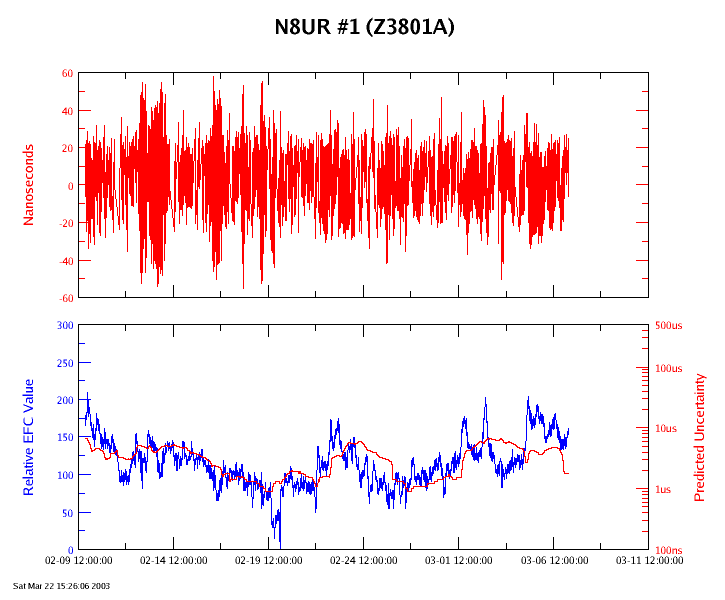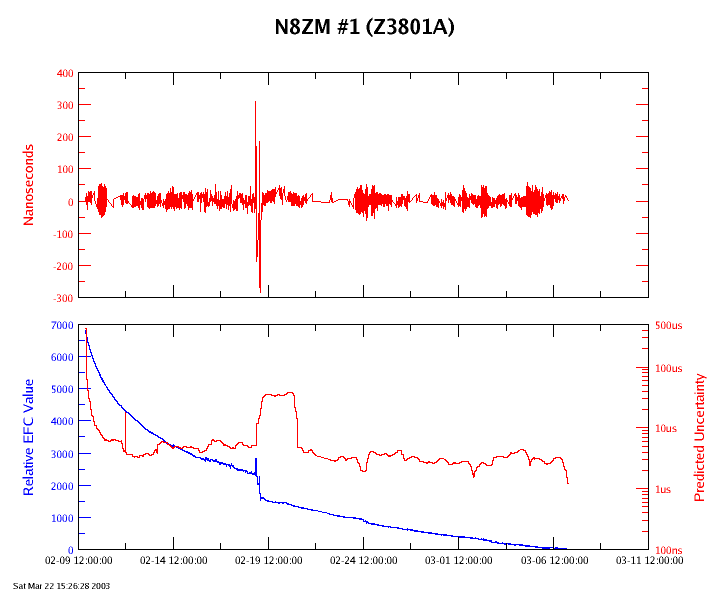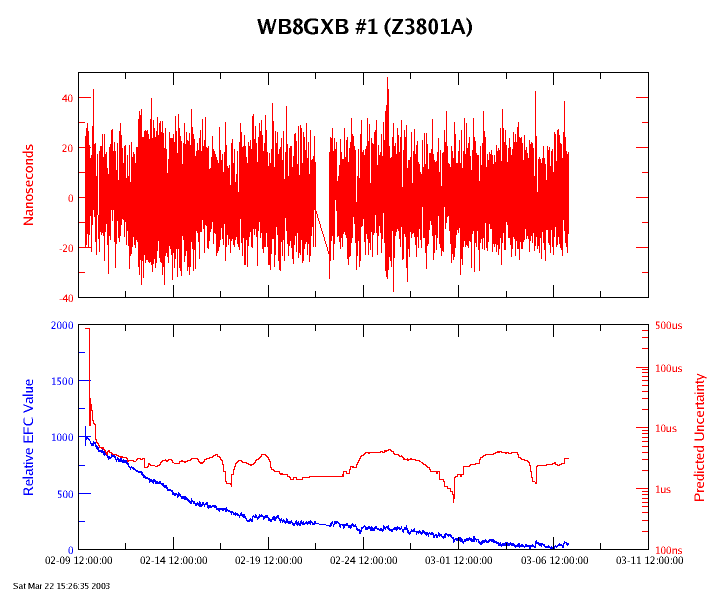Z3801A Receiver Performance:
Long Term Plots
This page shows a chart of the internal stats for five Z3801A receivers
over a several-week test run, plus another graph at the bottom showing the
temperature in the vicinity of the units.
There are two charts generated for each receiver. The top chart shows the time interval between the 1pps signal derived from the unit's 10MHz oscillator and the "filtered GPS 1pps" time signal (The HP documentation I have doesn't describe what this filtering is).
The second chart has two graphs. The one in blue, with its Y axis labels on the left, shows the EFC correction applied to keep the oscillator on frequency. This is a relative value (using the minimum recorded value as zero). The actual EFC value isn't too meaningful as long as it's within the unit's correction range; all these units were operating with EFC values between 700,000 and 800,000, well within the safety zone. Information from the web indicates that each EFC step equals a correction of about 1x10-12.
The graph in red, with its Y axis labels on the right, shows the "Predicted Uncertainty" which is the receiver's calculation of how much time it will gain or lose during the first 24 hours after the GPS reference is removed.
Note that the Y axes of the time interval and EFC graphs are autoscaled, so you can't directly compare the plots between units as the scales are probably different. Also, the Y axis of the predicted uncertainty graph is logarithmic rather than a linear scale; this reflects the fact that while the maximum PU is 432 microseconds, a reading much above ten microseconds indicates a problem.
Note 1: If you're having trouble displaying these graphs in Internet Explorer, here's info on why, and how to fix the problem.
Note 2: On the evening of 20/21 February, a glitch caused data to be lost for several hours for MVUS-1, N8ZM-1, and WB8GXB-1. On the afternoon of 25 February, there is another short data loss (about 20 minutes) for those three units while some housekeeping was done.
The Results -- Full Test Run




